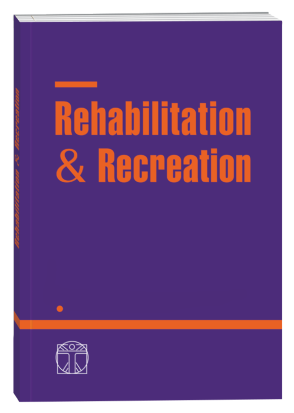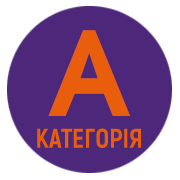ФІТОХІМІЧНІ СПОЛУКИ МОРСЬКОГО ОГІРКА, ЯКИЙ ВЖИВАЄТЬСЯ ПІСЛЯ ВПРАВ, ЗНАЧНО ЗНИЖУЮТЬ РІВЕНЬ NF-KB
DOI:
https://doi.org/10.32782/2522-1795.2025.19.2.12Ключові слова:
морський огірок, фізичні вправи, запалення, NF-kBАнотація
Мета цього дослідження – проаналізувати вплив вживання морського огірка після фізичного навантаження на рівень NF-kB як біомаркера запалення. Матеріал. Було проведено експериментальне дослідження з до– та післятестовим груповим дизайном, в якому порівнювали групу плацебо (К1) з групою лікування (К2), яка отримувала 500 мг добавки з морського огірка. У дослідженні взяли участь вісімнадцять здорових чоловіків. Для дослідження рівня NF-kB використовували метод ІФА (імуноферментний аналіз). Результати. Характеристиками досліджуваних були вік, зріст, вага, ІМТ, артеріальний тиск (систолічний та діастолічний). Результати t-тесту характеристик обстежуваних показали, що достовірної різниці між К1 та К2 не було (p≥0,05). Крім того, результати дослідження показали, що група К1, яка отримувала плацебо після фізичного навантаження, не змогла суттєво знизити рівень NF-kB (p>0,05). У групі K2, яка приймала морські огірки після фізичного навантаження, рівень NF-kB значно знизився (*p<0,05). Вміст фенолів та поліфенолів у добавці з морських огірків має протизапальні властивості, які позитивно впливають на зниження рівня NF-kB після тренування. Крім того, пептиди в морських огірках функціонують як відновлювальні агенти, які можуть захищати клітини від підвищеної сигналізації NF-κB, фосфоінозитид-3-кінази або Akt-сигнальних шляхів, а також протеїнкінази, що активується мітогеном. Зниження рівня NF-kB має потенціал для зменшення прозапальних цитокінів, таких як ФНП-a, які є тригерами болю в м’язах після фізичних навантажень, що виникають із запізненням. Висновки. Можна зробити висновок, що вживання морського огірка в дозі 500 мг через 24 години після фізичного навантаження може знизити рівень NF-kB. Людям, які регулярно займаються спортом, настійно рекомендується вживати морський огірок як додаткову добавку для пригнічення запалення після фізичних навантажень.
Посилання
1. Aatab, F., Bellali, F., Aboudamia, F.Z., Errhif, A., & Kharroubi, M. (2023). Phenolic compounds and in vitro antioxidant activity of spray-dried and freeze-dried aqueous extracts of sea cucumber (Holothuria tubulosa). Journal of Applied Biology and Biotechnology, 11(6), 158–167. https://doi.org/10.7324/JABB.2023.130990.
2. Ajiboye, B.O., Shonibare, M.T., & Oyinloye, B.E. (2020). Antidiabetic activity of watermelon (Citrullus lanatus) juice in alloxan-induced diabetic rats. Journal of Diabetes and Metabolic Disorders, 19(1), 343–352. https://doi.org/10.1007/s40200-020-00515-2.
3. Ayubi, N., Kusnanik, N.W., Herawati, L., Komaini, A., Mutohir, T.C., Gemaini, A., Nugroho, A.S., & Pranoto, N.W. (2023). Effects of Curcumin on Inflammatory Response During Exercise-Induced Muscle Damage (Literature Review). Biointerface Research in Applied Chemistry, 13(2), 1–19.
4. Ayubi, N., Padmasari, D.F.,Komaini, A., Syafawi, A., Ardha, M.A. Al, Dafun, P.B., Ming, J.W., Lesmana, H.S., & Putri, D.R.S. (2024). Phytochemical Compounds in Sea Cucumber Have the Potential to Reduce Oxidative Stress and Inflammation Due to Exercise: Systematic Review. Physical Education Theory and Methodology, 24(1), 158–168. https://doi.org/10.17309/tmfv.2024.1.19.
5. Ayubi, N., Kusnanik, N.W., Herawati, L., Callixte, C., Ming, J.W., Aljunaid, M., Mario, D.T., Komaini, A., & Padmasari, D.F. (2024). Potential of Curcumin to Reduce Serum Nuclear Factor-Kappa B (NF-kB) Levels After High-Intensity Exercise. Retos, 57, 616–622. https://doi.org/10.47197/retos.v57.103902.
6. Bensimon, A., Aebersold, R., & Shiloh, Y. (2011). Beyond ATM: The protein kinase landscape of the DNA damage response. FEBS Letters, 585(11), 1625–1639. https://doi.org/10.1016/j.febslet.2011.05.013.
7. Blanchett, S., Boal-Carvalho, I., Layzell, S., & Seddon, B. (2021). NF-kB and Extrinsic Cell Death Pathways – Entwined Do-or-Die Decisions for T cells. Trends in Immunology, 42(1), 76–88. https://doi.org/10.1016/j.it.2020.10.013.
8. Boguszewski, D., Krawczyk, A., Dębek, M., & Adamczyk, J.G. (2024). The effects of foam rolling applied to delayed-onset muscle soreness of the quadriceps femoris after Tabata training. Biomedical Human Kinetics, 16(1), 203–209. https://doi.org/10.2478/bhk-2024-0021.
9. Carletti, A., Cardoso, C., Lobo-Arteaga, J., Sales, S., Juliao, D., Ferreira, I., Chainho, P., Dionísio, M.A., Gaudêncio, M.J., Afonso, C., Lourenço, H., Cancela, M.L., Bandarra, N.M., & Gavaia, P.J. (2022). Antioxidant and Antiinflammatory Extracts from Sea Cucumbers and Tunicates Induce a Pro-osteogenic Effect in Zebrafish Larvae. Frontiers in Nutrition, 9(May), 1–13. https://doi.org/10.3389/fnut.2022.888360.
10. Cohen, S.P., Vase, L., & Hooten, W.M. (2021). Chronic pain: an update on burden, best practices, and new advances. The Lancet, 397(10289), 2082–2097. https://doi.org/10.1016/S0140-6736(21)00393-7.
11. Dewi, L., Agung, A., Agung, I., & Nataswari, S. (2025). Anti-inflammatory and antioxidant effects of sea cucumber extract in mitigating hepatic TNF– α elevation induced by high-fat diet. 1–5.
12. Fagbohun, O.F., Thilakarathna, W.P.D.W., Zhou, J., Lehmann, C., Jiao, G., & Rupasinghe, H.P.V. (2024). Sea Cucumber and Blueberry Extracts Suppress Inflammation and Reduce Acute Lung Injury through the Regulation of NF-kB/MAPK/JNK Signaling Pathway in Lipopolysaccharide-Treated C57BL/6 Mice. Molecules, 29(7). https://doi.org/10.3390/molecules29071511.
13. Gao, C., Liu, Y., Jiang, C., Liu, L., Li, J., Li, D., Guo, X., Wang, Z., Yang, Y., Liu, L., Yao, P., & Tang, Y. (2020). Intensive running enhances NF-kB activity in the mice liver and the intervention effects of quercetin. Nutrients, 12(9), 1–12. https://doi.org/10.3390/nu12092770.
14. Gloire, G., Legrand-Poels, S., & Piette, J. (2006). NF-kB activation by reactive oxygen species: Fifteen years later. Biochemical Pharmacology, 72(11), 1493–1505. https://doi.org/10.1016/j.bcp.2006.04.011.
15. Han, K., Kwon, O., Jung, S.Y., Park, I.H., Hwang, M.S., Park, S.Y., Hwang, E.H., & Lee, J.H. (2020). Jakyakgamcho-tang in the relief of delayed-onset muscle soreness in healthy adults: Study protocol for a randomized, double-blind, placebo-controlled, crossover design clinical trial. Trials, 21(1), 1–10. https://doi.org/10.1186/s13063-020-4119-4.
16. Hody, S., Croisier, J.-L., Bury, T., Rogister, B., & Leprince, P. (2019). Eccentric Muscle Contractions: Risks and Benefits. Frontiers in Physiology, 10, 536. https://doi.org/10.3389/fphys.2019.00536.
17. Hong, Y., Boiti, A., Vallone, D., & Foulkes, N.S. (2024). Reactive Oxygen Species Signaling and Oxidative Stress: Transcriptional Regulation and Evolution. Antioxidants, 13(3). https://doi.org/10.3390/antiox13030312.
18. Hossain, A., Dave, D., & Shahidi, F. (2022). Antioxidant Potential of Sea Cucumbers and Their Beneficial Effects on Human Health. Marine Drugs, 20(8), 1–22. https://doi.org/10.3390/md20080521.
19. Hossain, A., Dave, D., & Shahidi, F. (2020). Northern sea cucumber (Cucumaria frondosa): A potential candidate for functional food, nutraceutical, and pharmaceutical sector. Marine Drugs, 18(5). https://doi.org/10.3390/md18050274.
20. Hwang, S.M., Chung, G., Kim, Y.H., & Park, C.K. (2019). El papel de las maresinas en el dolor inflamatorio: Función de macrófagos en la regeneración de heridas. Diario Internacional de Ciencias Moleculares, 20(23).
21. Jung, S., Ahn, N., Park, J., & Kim, K. (2018). Effects of 8 Weeks Calorie Reduction and Resistance Exercise on Traf2-NFkB-mTOR and SIRT1-FoxO1 Signal Expression of Cardiac Muscle in High-fat Induced Obese Middle-Aged Rats. Exercise Science. https://doi.org/10.15857/ksep.2018.27.2.126.
22. Kaczmarek, A., Kaczmarek, M., Ciałowicz, M., Clemente, F.M., Wolański, P., Badicu, G., & Murawska-Ciałowicz, E. (2021). The role of satellite cells in skeletal muscle regeneration – the effect of exercise and age. Biology, 10(10), 1–18. https://doi.org/10.3390/biology10101056.
23. Lingappan, K. (2018). NF-kB in oxidative stress. Current Opinion in Toxicology, 7, 81–86. https://doi.org/10.1016/j.cotox.2017.11.002.
24. Lu, M., Mishra, A., Boschetti, C., Lin, J., Liu, Y., Huang, H., Kaminski, C.F., Huang, Z., Tunnacliffe, A., & Kaminski Schierle, G.S. (2021). Sea Cucumber-Derived Peptides Alleviate Oxidative Stress in Neuroblastoma Cells and Improve Survival in C. elegans Exposed to Neurotoxic Paraquat. Oxidative Medicine and Cellular Longevity. https://doi.org/10.1155/2021/8842926.
25. Malange, K.F., Navia-Pelaez, J.M., Dias, E.V., Lemes, J.B.P., Choi, S.H., Dos Santos, G.G., Yaksh, T.L., & Corr, M. (2022). Macrophages and glial cells: Innate immune drivers of inflammatory arthritic pain perception from peripheral joints to the central nervous system. Frontiers in Pain Research, 3(October), 1–20. https://doi.org/10.3389/fpain.2022.1018800.
26. Mao, J., Li, S., Fu, R.R., Wang, Y., Meng, J., Jin, Y., Wu, T., & Zhang, M. (2023). Sea Cucumber Hydrolysate Alleviates Immunosuppression and Gut Microbiota Imbalance Induced by Cyclophosphamide in Balb/c Mice through the NF-κB Pathway. Foods, 12(8). https://doi.org/10.3390/foods12081604.
27. Markus, I., Constantini, K., Hoffman, J.R., Bartolomei, S., & Gepner, Y. (2021). Exerciseinduced muscle damage: mechanism, assessment and nutritional factors to accelerate recovery. In European Journal of Applied Physiology. https://doi.org/10.1007/s00421-020-04566-4.
28. Meng, Q. (2024). The Impact of Physical Exercise on Oxidative and Nitrosative Stress: Balancing the Benefits and Risks. 1–26.
29. Nanavati, K., Rutherfurd-Markwick, K., Lee, S.J., Bishop, N.C., & Ali, A. (2022). Effect of curcumin supplementation on exercise-induced muscle damage: a narrative review. European Journal of Nutrition. https://doi.org/10.1007/s00394-022-02943-7.
30. Nobari, H., Aquino, R., Clemente, F.M., Khalafi, M., Adsuar, J.C., & Pérez-Gómez, J. (2020). Description of acute and chronic load, training monotony and strain over a season and its relationships with well-being status: A study in elite under-16 soccer players. Physiology and Behavior, 225. https://doi.org/10.1016/j.physbeh.2020.113117.
31. Nonnenmacher, Y., & Hiller, K. (2018). Biochemistry of proinflammatory macrophage activation. Cellular and Molecular Life Sciences: CMLS, 75(12), 2093–2109. https://doi.org/10.1007/s00018-018-2784-1.
32. Paulsen, Gø., Crameri, R., Benestad, H.B., Fjeld, J.G., Mørkrid, L., Hallén, J., & Raastad, T. (2010). Time course of leukocyte accumulation in human muscle after eccentric exercise. Medicine and Science in Sports and Exercise, 42(1), 75–85. https://doi.org/10.1249/MSS.0b013e3181ac7adb.
33. Pavis, G.F., Jameson, T.S.O., Dirks, M.L., Lee, B.P., Abdelrahman, D.R., Murton, A.J., Porter, C., Alamdari, N., Mikus, C.R., Wall, B.T., & Stephens, F.B. (2021). Improved recovery from skeletal muscle damage is largely unexplained by myofibrillar protein synthesis or inflammatory and regenerative gene expression pathways. American Journal of Physiology – Endocrinology and Metabolism, 320(2), E291–E305. https://doi.org/10.1152/AJPENDO.00454.2020.
34. Powers, S.K., Radak, Z., Ji, L.L., & Jackson, M. (2024). Reactive oxygen species promote endurance exercise-induced adaptations in skeletal muscles. Journal of Sport and Health Science, 13(6), 780–792. https://doi. org/10.1016/j.jshs.2024.05.001.
35. Rasyid, A., Putra, M.Y., & Yasman. (2023). Antibacterial and antioxidant activity of sea cucumber extracts collected from Lampung waters, Indonesia. Kuwait Journal of Science, 50(4), 615–621. https://doi.org/10.1016/j.kjs.2023.03.012.
36. Senadheera, T.R.L., Hossain, A., Dave, D., & Shahidi, F. (2023). Antioxidant and ACE-Inhibitory Activity of Protein Hydrolysates Produced from Atlantic Sea Cucumber (Cucumaria frondosa). Molecules, 28(13). https://doi.org/10.3390/molecules28135263.
37. Stewart, I.B., Moghadam, P., Borg, D.N., Kung, T., Sikka, P., & Minett, G.M. (2020). Thermal infrared imaging can differentiate skin temperature changes associated with intense single leg exercise, but not with delayed onset of muscle soreness. Journal of Sports Science and Medicine, 19(3), 469–477.
38. Townsend, J.R., Stout, J.R., Jajtner, A.R.,Church, D.D., Beyer, K.S., Oliveira, L.P., La Monica, M.B., Riffe, J.J., Muddle, T.W.D., Baker, K.M., Fukuda, D.H., Roberts, M.D., & Hoffman, J.R. (2016). Resistance exercise increases intramuscular NF-kB signaling in untrained males. European Journal of Applied Physiology, 116(11–12), 2103–2111. https://doi.org/10.1007/s00421-016-3463-2.
39. Turillazzi, E., Neri, M., Cerretani, D., Cantatore, S., Frati, P., Moltoni, L., Busardò, F.P., Pomara, C., Riezzo, I., & Fineschi, V. (2016). Lipid peroxidation and apoptotic response in rat brain areas induced by long-term administration of nandrolone: The mutual crosstalk between ROS and NF-kB. Journal of Cellular and Molecular Medicine, 20(4), 601–612. https://doi.org/10.1111/jcmm.12748.
40. Varrassi, G., Alon, E., Bagnasco, M., Lanata, L., Mayoral-Rojals, V., Paladini, A., Pergolizzi, J.V., Perrot, S., Scarpignato, C., & Tölle, T. (2019). Towards an Effective and Safe Treatment of Inflammatory Pain: A Delphi-Guided Expert Consensus. Advances in Therapy, 36(10), 2618–2637. https://doi.org/10.1007/s12325-019-01053-x.
41. Vergne-Salle, P., & Bertin, P. (2021). Chronic pain and neuroinflammation. Joint Bone Spine, 88(6), 105222. https://doi.org/10.1016/j.jbspin.2021.105222.
42. Wargasetia, T.L., Ratnawati, H., Widodo, N., & Widyananda, M.H. (2023). Antioxidant and Anti-inflammatory Activity of Sea Cucumber (Holothuria scabra) Active Compounds against KEAP1 and iNOS Protein. Bioinformatics and Biology Insights, 17. https://doi.org/10.1177/11779322221149613.
43. Wiecha, S., Posadzki, P., Prill, R., & Płaszewski, M. (2024). Physical Therapies for Delayed Onset Muscle Soreness: A Protocol for an Umbrella and Mapping Systematic Review with Meta-Meta-Analysis. Journal of Clinical Medicine, 13(7), 1–11. https://doi.org/10.3390/jcm13072006.
44. Zhang, X., Zhu, L., Wang, X., Xia, L., & Zhang, Y. (2023). Advances in the role and mechanism of miRNA in inflammatory pain. Biomedicine and Pharmacotherapy, 161, 114463. https://doi.org/10.1016/j.biopha.2023.114463.
45. Zhao, Q., Xue, Y., Wang, J.-feng, Li, H., Long, T.-teng, Li, Z., Wang, Y.– ming, Dong, P., & Xue, C.-hu. (2012). In vitro and in vivo anti-tumour activities of echinoside A and ds-echinoside A from Pearsonothuria graeffei. Journal of the Science of Food and Agriculture, 92(4), 965–974. https://doi.org/10.1002/jsfa.4678.
46. Zulaini, Harahap, N.S., Siregar, N.S., & Zulfahri. (2021). Effect Stretching and Recovery on Delayed Onset Muscle Soreness (DOMS) after Exercise. Journal of Physics: Conference Series. https://doi.org/10.1088/1742-6596/1811/1/012113.
##submission.downloads##
Опубліковано
Як цитувати
Номер
Розділ
Ліцензія

Ця робота ліцензується відповідно до Creative Commons Attribution-NonCommercial-NoDerivatives 4.0 International License.





